Carina Geldhauser
Enhancing Carbon Emission Reduction Strategies using OCO and ICOS data
Oct 05, 2024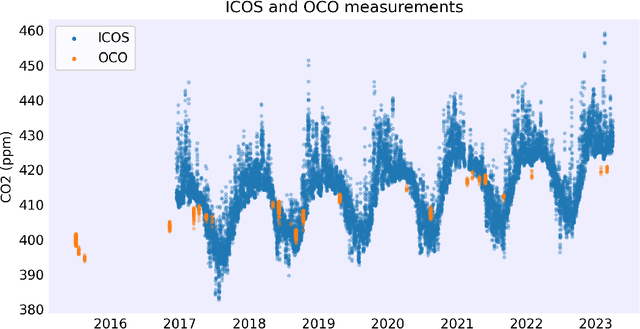

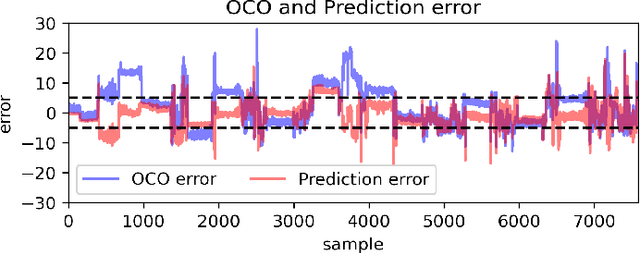
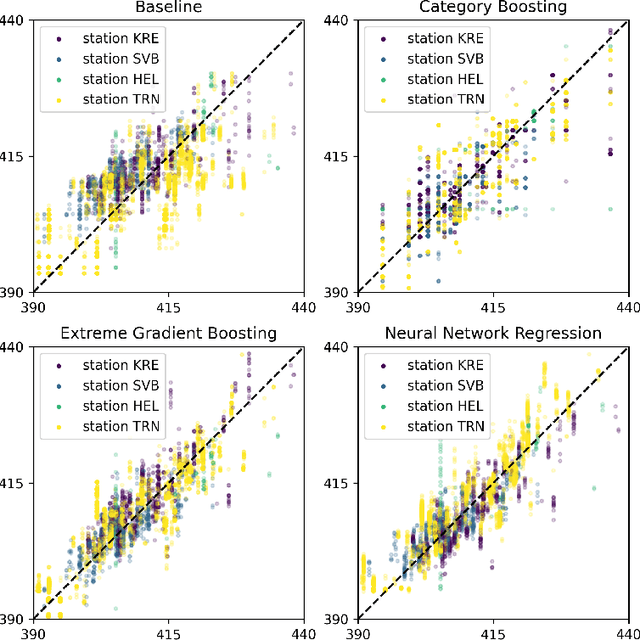
Abstract:We propose a methodology to enhance local CO2 monitoring by integrating satellite data from the Orbiting Carbon Observatories (OCO-2 and OCO-3) with ground level observations from the Integrated Carbon Observation System (ICOS) and weather data from the ECMWF Reanalysis v5 (ERA5). Unlike traditional methods that downsample national data, our approach uses multimodal data fusion for high-resolution CO2 estimations. We employ weighted K-nearest neighbor (KNN) interpolation with machine learning models to predict ground level CO2 from satellite measurements, achieving a Root Mean Squared Error of 3.92 ppm. Our results show the effectiveness of integrating diverse data sources in capturing local emission patterns, highlighting the value of high-resolution atmospheric transport models. The developed model improves the granularity of CO2 monitoring, providing precise insights for targeted carbon mitigation strategies, and represents a novel application of neural networks and KNN in environmental monitoring, adaptable to various regions and temporal scales.
Gradient is All You Need?
Jun 16, 2023

Abstract:In this paper we provide a novel analytical perspective on the theoretical understanding of gradient-based learning algorithms by interpreting consensus-based optimization (CBO), a recently proposed multi-particle derivative-free optimization method, as a stochastic relaxation of gradient descent. Remarkably, we observe that through communication of the particles, CBO exhibits a stochastic gradient descent (SGD)-like behavior despite solely relying on evaluations of the objective function. The fundamental value of such link between CBO and SGD lies in the fact that CBO is provably globally convergent to global minimizers for ample classes of nonsmooth and nonconvex objective functions, hence, on the one side, offering a novel explanation for the success of stochastic relaxations of gradient descent. On the other side, contrary to the conventional wisdom for which zero-order methods ought to be inefficient or not to possess generalization abilities, our results unveil an intrinsic gradient descent nature of such heuristics. This viewpoint furthermore complements previous insights into the working principles of CBO, which describe the dynamics in the mean-field limit through a nonlinear nonlocal partial differential equation that allows to alleviate complexities of the nonconvex function landscape. Our proofs leverage a completely nonsmooth analysis, which combines a novel quantitative version of the Laplace principle (log-sum-exp trick) and the minimizing movement scheme (proximal iteration). In doing so, we furnish useful and precise insights that explain how stochastic perturbations of gradient descent overcome energy barriers and reach deep levels of nonconvex functions. Instructive numerical illustrations support the provided theoretical insights.
All's well that FID's well? Result quality and metric scores in GAN models for lip-sychronization tasks
Dec 28, 2022Abstract:We test the performance of GAN models for lip-synchronization. For this, we reimplement LipGAN in Pytorch, train it on the dataset GRID and compare it to our own variation, L1WGAN-GP, adapted to the LipGAN architecture and also trained on GRID.
A simulated annealing approach to optimal storing in a multi-level warehouse
Mar 25, 2017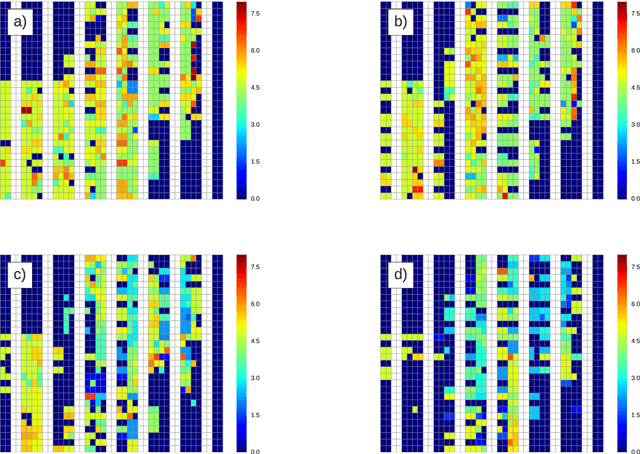
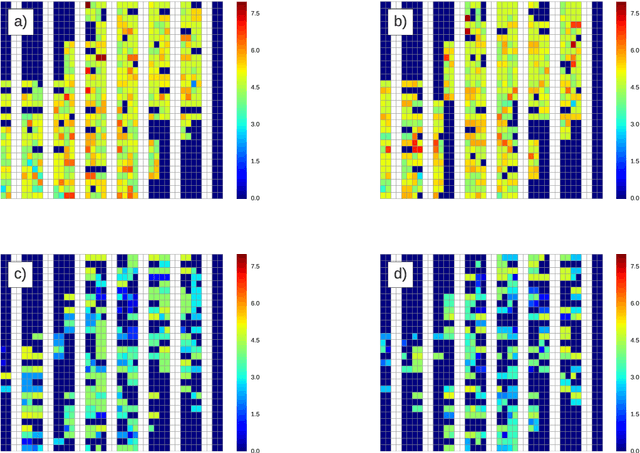

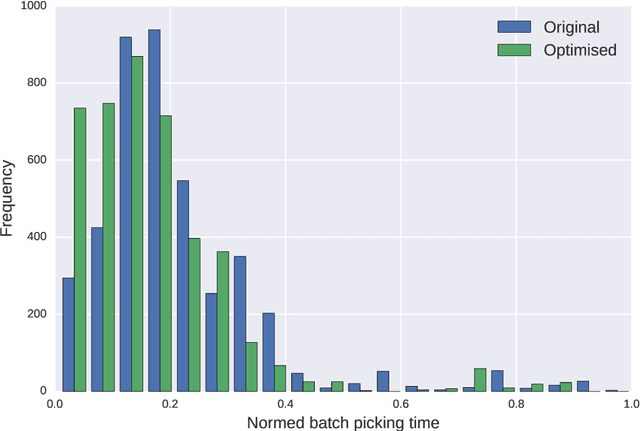
Abstract:We propose a simulated annealing algorithm specifically tailored to optimise total retrieval times in a multi-level warehouse under complex pre-batched picking constraints. Experiments on real data from a picker-to-parts order picking process in the warehouse of a European manufacturer show that optimal storage assignments do not necessarily display features presumed in heuristics, such as clustering of positively correlated items or ordering of items by picking frequency. In an experiment run on more than 4000 batched orders with 1 to 150 items per batch, the storage assignment suggested by the algorithm produces a 21\% reduction in the total retrieval time with respect to a frequency-based storage assignment.
 Add to Chrome
Add to Chrome Add to Firefox
Add to Firefox Add to Edge
Add to Edge